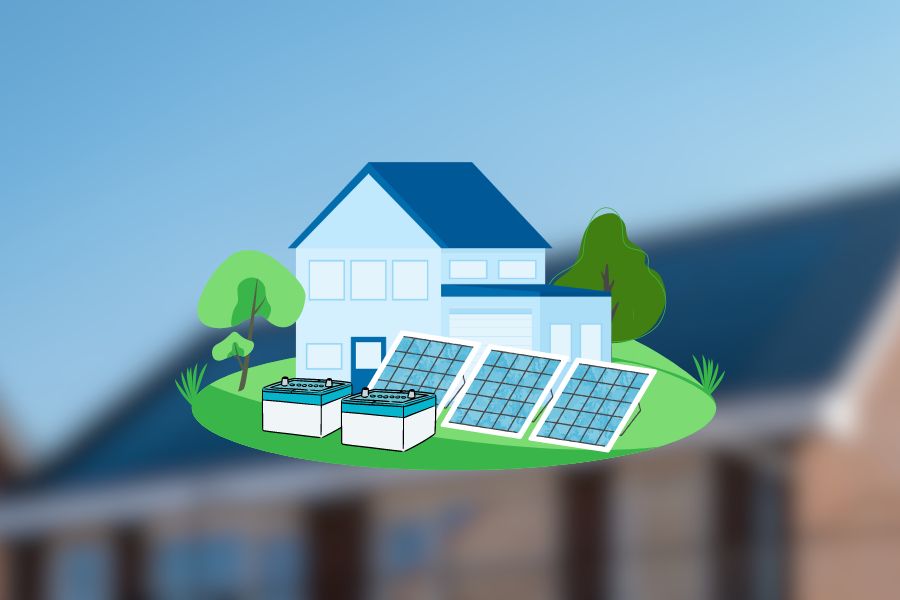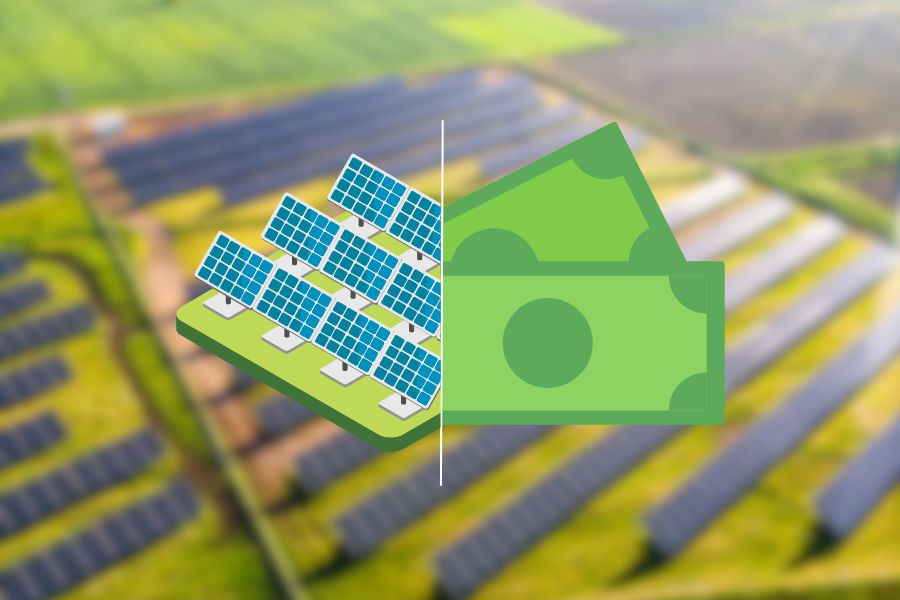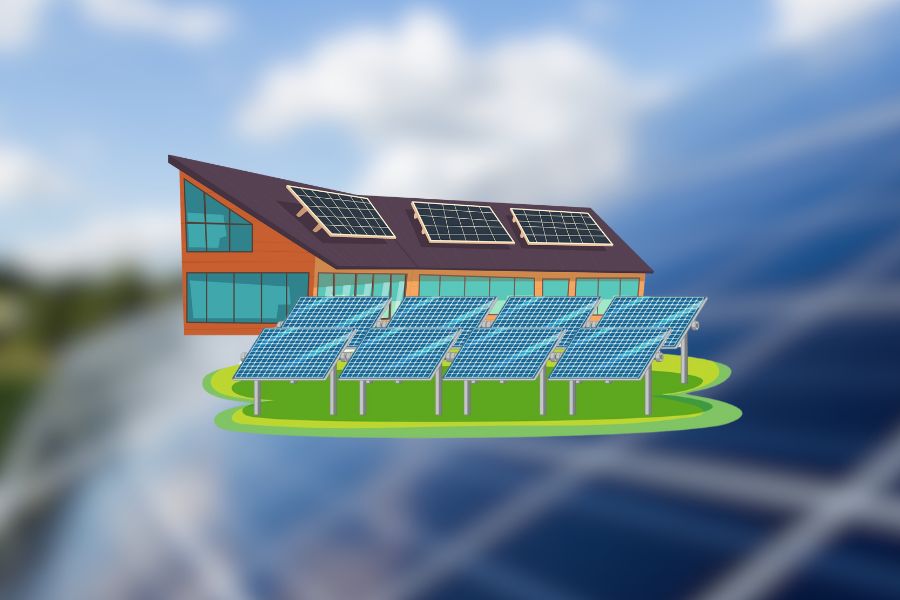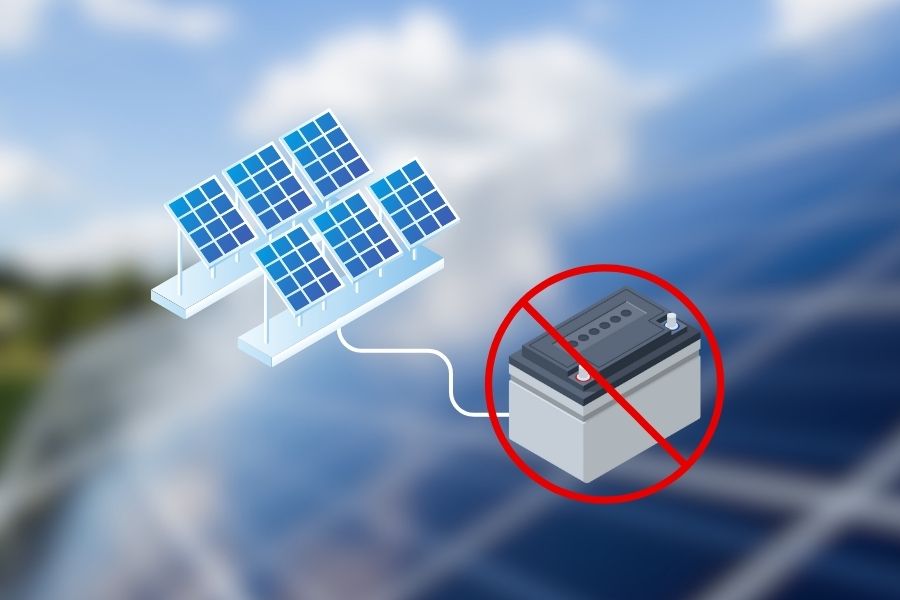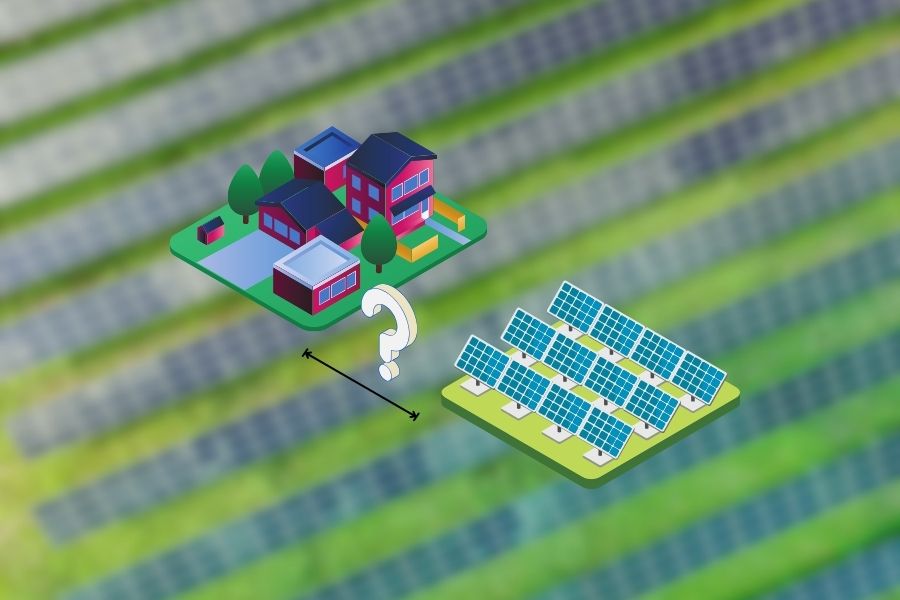To power a house in Ireland using solar panels and batteries, you’d consider energy consumption, local sunlight conditions, and equipment efficiency.
Every Irish household has unique energy needs, and sunlight exposure can vary significantly nationwide. A clear grasp of your daily energy requirements, coupled with an understanding of Ireland’s specific solar potential, is crucial.
By evaluating these factors, homeowners in Ireland can determine the optimal number of solar panel systems and batteries. Again, that ensures they capture sufficient energy while getting the best value for their investment.
How Many Batteries to Power a House
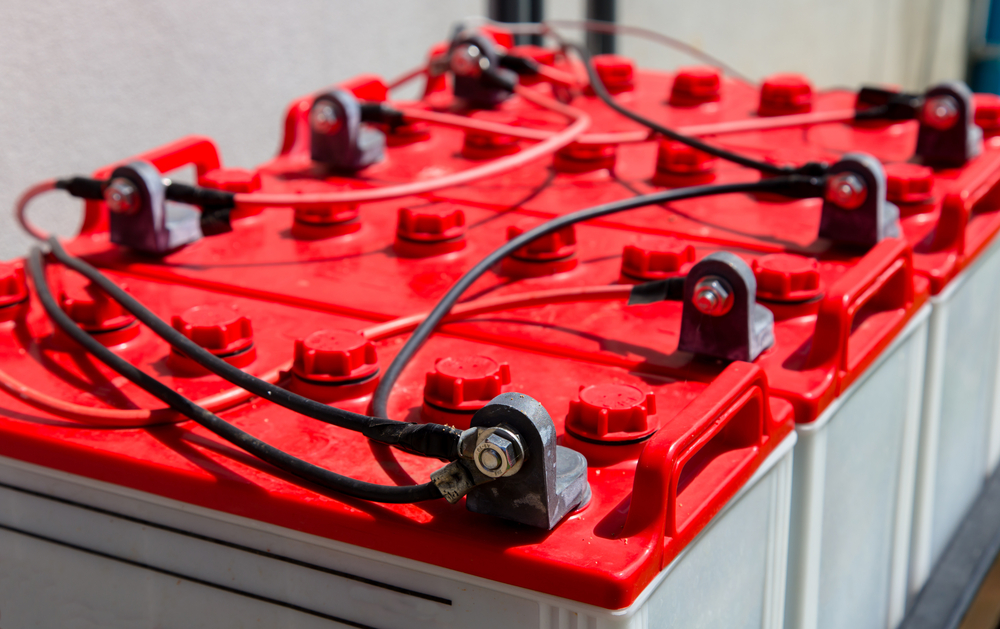
To determine how many solar batteries are needed to power a house in Ireland, we need to consider several factors:
- Energy Consumption: The average household in Ireland consumes about 4,200 kWh (kilowatt-hours) of electricity per year or roughly 11.5 kWh per day.
- Solar Generation Potential: Ireland gets less sun than sunnier places. Its average solar panel output is about 850-950 kWh per kWp (kilowatt peak) per year due to its latitude and weather conditions. This figure helps to understand how much electricity solar panels can produce but doesn’t directly translate to battery storage needs.
- Battery Storage: The size of a solar battery is in kilowatt-hours (kWh) for its capacity. A commonly used solar battery like the Tesla Powerwall 2 has a usable capacity of 13.5 kWh.
- Days of Autonomy: This determines how many days you want your battery to provide power without additional solar input. For instance, they can do that during long periods of cloudy weather or winter when the days are shorter. A common approach is to aim for 2-3 days of autonomy.
- Battery Depth of Discharge (DoD): Only use some of the capacity of a battery. For most solar batteries, a depth of discharge of around 90% is recommendable. Besides, this means you can use 90% of the battery’s rated capacity. A 13.5 kWh Tesla Powerwall equates to 12.15 kWh of usable storage.
Using the above considerations:
If you’re planning for two days of autonomy:
Daily consumption = 11.5 kWh, Total for 2 days = 23 kWh
With the Tesla Powerwall providing 12.15 kWh:
23 kWh ÷ 12.15 kWh/battery ≈ 1.9
Rounding up, you’d need 2 Tesla Powerwalls.
For three days of autonomy, you’d need around 3 Tesla Powerwalls.
- System Efficiency and Losses: Always account for energy losses due to inefficiencies in the inverter, battery charging/discharging, and other system components. A good rule of thumb is to assume around 10% losses, so you might want more storage to compensate for this.
- Partial Solar Days: On many days, even if it’s cloudy, you’ll still get some solar power generation. Again, it will reduce the energy you draw from the batteries, allowing you to use fewer batteries. Furthermore, it extends the number of days you can go without sunlight.
A typical household in Ireland aiming for 2-3 days of autonomy without any solar input would need 2-3 Tesla Powerwall 2 batteries. However, consult a local solar professional for specific household needs, potential solar panel system generation, and other nuances.
How Long Will Solar Panels Last?
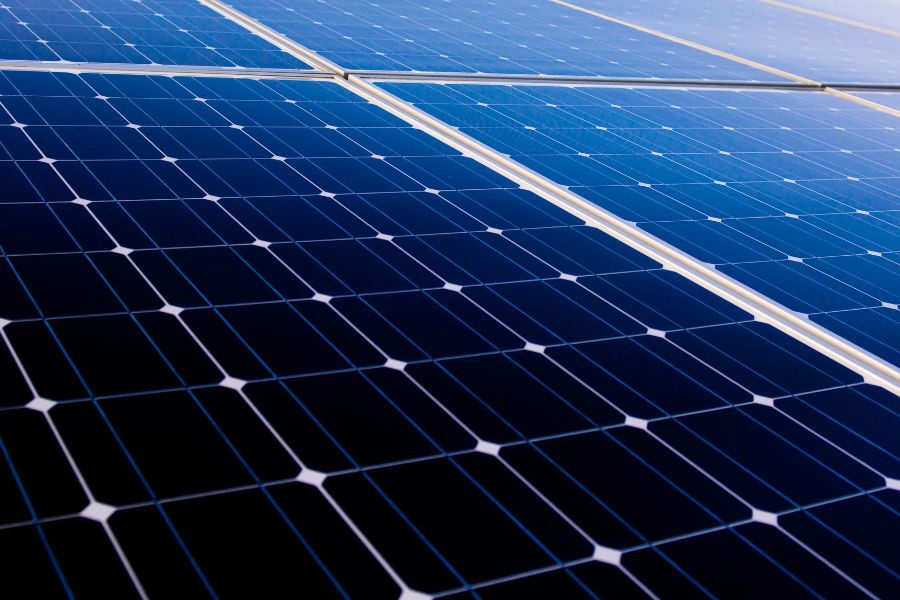
Solar panels are known for their durability and long lifespan. Here’s a breakdown of how long solar panels typically last:
Degradation Rate
Solar panels degrade over time, which means they lose a small percentage of their efficiency each year. On average, solar panels have a yearly degradation rate of about 0.5% to 1%. It means that after 25 years, a solar panel will still produce 75% to 87.5% of its original output, depending on the degradation rate.
Warranty
Most solar panel manufacturers offer a performance warranty for their products. This warranty typically guarantees that the panels will produce at least 80-90% of their rated output after 25 years. Some high-quality panels come with extended warranties of up to 30 years.
Lifespan
While the warranty usually covers 25 to 30 years, the actual lifespan of a solar panel is typically longer. Many solar panels can continue producing electricity for 30 to 40 years, albeit at a slightly reduced efficiency due to the abovementioned degradation.
Factors Affecting Lifespan
- Quality of Manufacturing: High-quality panels tend to last longer and degrade slower.
- Installation Quality: Proper installation can prevent water leakage or electrical problems that reduce the panel’s lifespan.
- Weather and Physical Stress: Panels in areas with harsh weather conditions (e.g., hail, strong winds) or high temperatures might degrade faster. However, modern panels get tested rigorously for these conditions to withstand them.
- Maintenance: Regular cleaning and maintenance can extend the lifespan of solar panels.
End of Lifespan
It’s important to note that even after 30 to 40 years, solar panels don’t just stop working. Instead, their efficiency continues to decrease at the annual degradation rate. If you have a panel that started with a 20% efficiency and has a 0.5% degradation rate, it might still have around 10% efficiency after 40 years.
Why Solar Batteries Are Important in Ireland
While we love our green landscapes and occasional sunny days in Ireland, we’re no strangers to clouds and rain. The weather can be a tad unpredictable. So, if you’re considering harnessing the sun’s power using solar panels, it’s only sometimes about those direct sunbeams. And that’s where solar batteries come into play.
Imagine this: It’s a sunny day, and your solar panels are soaking up all that sunlight. You’re producing more energy than you can use. You can store it in a solar battery instead of letting it go to waste or sending it back to the grid. Again, this is especially handy for those long winter evenings or grey days when your panels aren’t generating as much electricity.
Also, let’s remember power outages. While they might not be a daily occurrence, having a stored energy reserve in your solar battery can be a lifesaver during these times. You wouldn’t have to fumble around for candles or torches; your home would continue humming, powered by the energy you stored on sunnier days.
Moreover, Ireland has been making big moves in promoting renewable energy, and with potential incentives or grants available, integrating solar batteries can also make financial sense.
So, in a nutshell? Solar batteries in Ireland are like your trusty umbrella—there for you when you need them, ensuring you’re never caught off guard by a sudden change in weather or circumstance!
Factors That Impact Battery Quantity
One should consider specific factors when determining the number of solar batteries needed in Ireland or any location. For Ireland, some aspects take on added significance due to its unique climate and geographical position:
Energy Consumption
Knowing how much energy a household or establishment uses daily will directly impact the size and quantity of batteries needed.
Solar Insolation
Ireland, being at a higher latitude and having many cloudy days, receives less sunlight than many other parts of the world. It can mean fewer hours to charge a battery, necessitating more storage to get through periods of low solar generation.
Days of Autonomy
Given Ireland’s cloudy and rainy weather, especially in the winter, households might want multiple days of autonomy. Equally important, it means enough stored energy to get through several days without significant solar input.
Depth of Discharge (DoD)
Batteries have recommended discharge levels to ensure longevity. For instance, a battery might have a 90% DoD, so for a 10 kWh battery, one should use only 9 kWh regularly.
Battery Efficiency and Type
Different technologies (e.g., lead-acid, lithium-ion) have varying efficiencies and life cycles. Lithium-ion batteries are generally more efficient and longer-lasting but can be more expensive.
Degradation Over Time
As batteries age, their capacity to hold a charge diminishes. While this is a universal trait of batteries, it’s essential to consider when calculating the number needed over the system’s lifespan.
Temperature
Ireland has a temperate maritime climate, so extreme temperatures are rare. However, cooler temperatures can sometimes reduce battery efficiency. It’s essential to ensure batteries are in a way that protects them from the elements.
Backup and Redundancy
If the solar system is meant to be a household’s primary power source, having additional battery capacity for redundancy can be crucial, especially during the darker winter months.
Grid Connectivity
If the household connects to the grid, they might not need as much solar battery power storage since the grid can be a backup. On the other hand, one would require more batteries for entirely off-grid systems.
How to Calculate How Many Solar Panels You Need for Your Home Per Area?
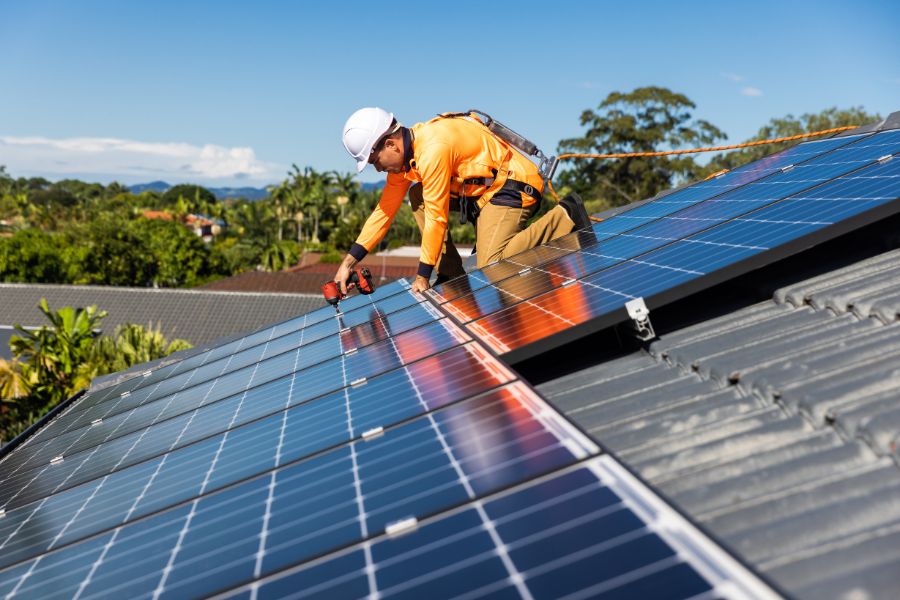
Understanding your home’s power consumption is crucial. By examining your electricity bills, you can deduce your average monthly or yearly kilowatt-hour (kWh) energy usage. Combined with solar insolation maps, this energy usage data provides insights into how much sunlight your region receives daily.
With a myriad of panels available, each with a different power rating typically between 250 to 400 watts, selecting one that matches your energy storage system and the power output you need is essential.
Suppose your goal is reducing dependency on the grid, especially during power outages. In that case, consider a grid-tied system that generates electricity and draws from the grid when necessary.
To gauge your solar requirements, divide your monthly power consumption by the average daily sunlight hours multiplied by the days in the month. Then, determine the number of panels by dividing the energy required by your chosen panel’s power rating.
However, solar panels often operate below their stated power output due to angle and environmental conditions. An 85% efficiency adjustment is a good starting point.
Consider your future energy needs, roof space, and local incentives or regulations as you ponder this transition. Moreover, having a backup energy storage system can buffer against unexpected power outages. As always, consult a solar professional for a detailed evaluation.
How Many Solar Panels Would I Need to Generate 1,000 Kilowatt-Hours Monthly?
To determine the number of solar panels required to generate 1,000 kilowatt-hours (kWh) monthly, you’ll need to consider a few factors:
- Monthly Energy Requirement: You want to generate 1,000 kWh/month.
- Sunlight Hours: This varies by location. For simplicity, you get an average of 5 hours of sunlight daily. That’s 5 hours x 30 days = 150 sunlight hours per month, on average.
- Energy Produced by One Solar Panel: A panel’s power depends on its wattage and efficiency. Let’s assume you’re considering a 300-watt solar panel for this example. So, one panel produces 300 watts (or 0.3 kW) in peak sunlight.
If you have 5 hours of peak sunlight, one panel will produce 0.3 kW x 5 hours = 1.5 kWh/day. Over a month, that’s 1.5 kWh/day x 30 days = 45 kWh/month.
To produce 1,000 kWh/month, you would need: 1,000 kWh ÷ 45 kWh/panel = 22.22 panels
So, you would need approximately 23 solar panels of 300 watts each to generate 1,000 kWh monthly, given an average of 5 peak sunlight hours daily.
Remember, this is a simplified calculation. The number of panels you’d need can vary based on the panels’ efficiency, local weather conditions, the angle and orientation of the panels, potential shading, and other factors. Consulting with a solar professional will provide a more precise estimate tailored to your circumstances.
Which Factors Affect the Number of Solar Panels Required by the House?
Alright, let’s dive into the factors that play a role in deciding how many solar panels your home might need:
Your Energy Consumption
The primary factor, of course! The more electricity you use, the more solar panels you’ll need. Check your electricity bills to determine your monthly or yearly kWh consumption.
Solar Panel Efficiency
Not all solar panels are created equal. Some convert sunlight into electricity more efficiently than others. Higher efficiency panels might cost more, but you’d need fewer.
Local Sunlight Hours
Location, location, location! If you’re basking in the sun most of the year (hello, sunny California!), you might need fewer panels than someone in a cloudier locale. You’ll want to look at the average number of peak sunlight hours your area gets.
Roof Space and Angle
The amount of space you’ve got and the angle of your roof can impact how many panels you can fit and how effectively they’ll capture sunlight. For instance, panels in the Northern Hemisphere typically work best when facing south.
Shading
Does a giant oak tree cast shadows on your roof? Buildings, trees, and other obstructions that create shade can reduce how much energy your panels produce.
Temperature and Climate
Here’s a fun fact: Solar panels love light but aren’t substantial heat fans. They become less efficient if the temperatures climb too high. So, local climate conditions can impact their performance.
Your Future Plans
Are you planning to buy an electric car? Do you expect a new addition to the family? Your future power needs might change, and factoring those in is good.
Type of Solar Installation
There are grid-tied systems connected to the local electricity grid and off-grid systems operating independently. The type you choose can influence the number of panels required.
Budget
Ah, the practical bit! How much you’re willing or able to invest can determine the size and quality of your solar setup.
Incentives and Rebates
Some regions offer financial incentives, rebates, or tax breaks for installing solar panels, which might allow you to invest in more panels or higher-quality ones.
How Many Kilowatts (KW) Of Solar Power Do Your Household Appliances Need?
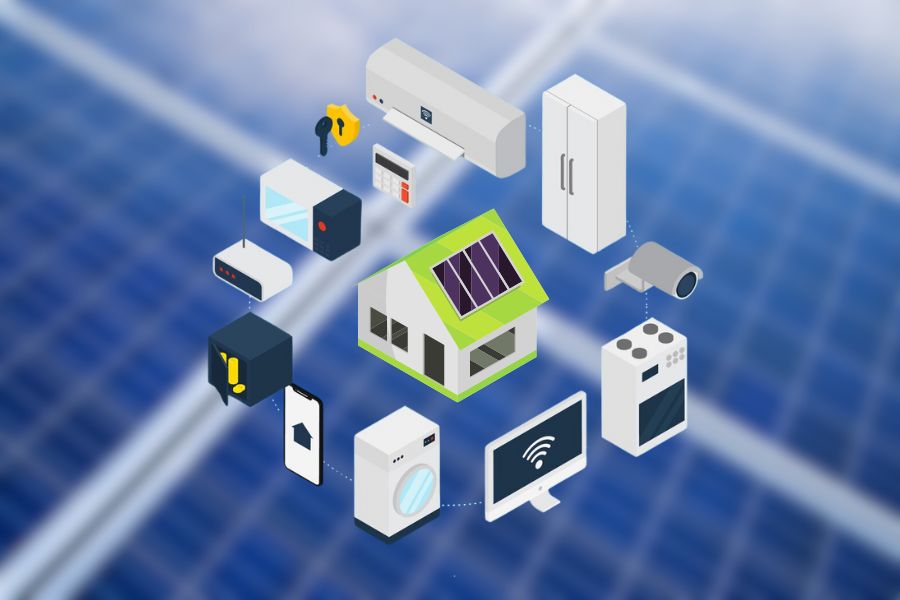
The amount of kilowatts (kW) of solar power required for your household appliances depends on the energy consumption of each appliance. To determine the kW requirement, consider each appliance’s wattage and usage duration first.
Here’s a general list of common household appliances and their average wattage:
- Refrigerator: 100-800 watts (depending on size and model)
- Freezer: 150-500 watts
- Oven: 1,000-5,000 watts (depending on the mode, i.e., broiling vs. baking)
- Microwave: 600-1,200 watts
- Dishwasher: 1,200-1,500 watts (when the heating element is on)
- Clothes Washer: 350-500 watts (when washing, more when heating water)
- Clothes Dryer: 1,800-5,000 watts
- Air Conditioner (Window unit): 500-1,500 watts
- Central Air Conditioner: 3,000-5,000 watts
- Vacuum Cleaner: 500-1,500 watts
- Television: 50-400 watts (depending on size and type)
- Computer: 100-800 watts (depending on type, i.e., laptop vs. desktop)
- LED Light Bulb: 8-12 watts
- Incandescent Light Bulb: 40-100 watts
To determine the kW requirement:
- Calculate Daily Consumption for Each Appliance: Multiply the wattage of each appliance by the number of hours it’s used daily. It gives you watt-hours (Wh).
For example, if a 400-watt TV runs for 4 hours daily: 400 watts x 4 hours = 1,600 Wh or 1.6 kWh - Total Daily Consumption: Sum up all appliances’ daily consumption (kWh) for unlimited daily energy usage.
- Determine Solar Power Requirement: To find out the kW of solar power required, divide the total daily consumption by the average sunlight hours of your location.
For instance, if your total consumption is 20 kWh/day and you get an average of 5 sunlight hours: Solar power required = 20 kWh / 5 hours = 4 kW
It means you’d need a 4 kW solar system to cover the energy consumption of your appliances, assuming they run every day.
Note: These are average figures, and the actual wattage can vary based on the specific brand, model, and usage patterns. Always refer to the appliance’s manual or label for precise power ratings.
Conclusion
Determining the number of solar panels and batteries required to power a home is more than just a one-size-fits-all equation. Factors like individual energy consumption, geographical location, and roof characteristics play crucial roles.
As solar technology advances, insights from institutions like the National Renewable Energy Laboratory further underscore the potential of solar power. Integrating an appropriate battery bank with your solar setup optimizes energy storage, allowing homeowners to harness excess energy for later use.
Homeowners can make the most of these renewable solutions by understanding specific needs and consulting with solar professionals, reducing their carbon footprint and electricity bills. As we transition to greener energy solutions, personalized solar setups, bolstered by research and the right battery bank, will light the way forward.
